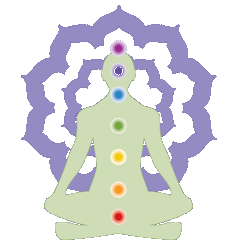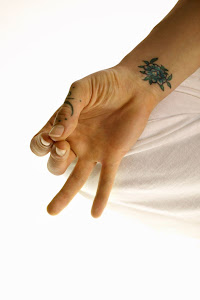Our culture is somewhat obsessed with the look of "six-pack" abs, and some people may hope to obtain them through yoga. But yoga creates supple strength, not hardness. The six-pack look can rob you of flexibility and freedom of movement. Overdoing abs exercises can lead to a flattening of the lumbar curve, creating a weakened spinal structure.
Our society's obsession with flat stomachs has psychological ties too. Many psychologists suggest that when we try to control our feelings, it leads to tightness in the belly - trying to swallow and hold it all in, as it were. Soft bellies seem vulnerable; abs of steel seem invulnerable. But as yogis we are learning to shed the armor we hold around the body. Tension interferes when we try to access the deeper wisdom that rests in the belly. As yogis, we require a supple abdomen in which we can feel the fullness of breath and sense the stillness of our being.
Strong, toned muscles at the core of your body support good health. And it is important to lift up through Uddiyanabandha when practicing. But it is a soft lift; it does not mean we should cultivate a permanent belly cramp, or hold our breath. Think of images of the Buddha, perhaps the world's best-known yogi. In many depictions, he doesn't have "abs of steel", or even anything close to it. Yogis know that chronically tight abdominals aren't any healthier than chronically tight hamstrings or back muscles. We want to develop a balance of abdominal strength, suppleness, relaxation, and awareness in our practice and our daily lives.
Here are four things to think about when working with the abdominal muscles in practice: (1) Movement springs from the body's center of gravity just below the navel; (2) asanas train this core to act as a stable base and fluid source of movement; (3) abdominal muscles should be toned but not tense; (4) the first step in abdominal fitness requires learning to sense this core, becoming familiar with it from the inside.
A basic knowledge of the belly's anatomy is extremely helpful for practice. Abdominal skin is different from much of the skin covering the rest of the body. It has subcutaneous tissue that loves to hold on to fat. It can store up to several inches. The fat-free bellies you see in ads are possible for less than 10 percent of the population. Your skin must be very thin to show muscle, and this can't always be achieved with exercise; it takes the right genes. Being young helps too. Once fat cells accumulate around your torso, they don't go away. You can shrink them. But they will always be there. Too much belly fat is unhealthy, of course. But working too hard to eliminate fat can also cause serious problems. Women can suffer estrogen depletion, bone weakness, and fractures. And psychologically, if you can't love your belly (no matter what shape it's in), you can't love yourself fully! A few centimeters or inches of fat over those muscles don't matter! Most adults, including runners and people of optimal health, carry a slight spare tire around their middles.
So let's focus deeper, thinking about the actual structure of the belly muscles. Right under the skin, a sturdy wall of four paired muscles stretches over the internal organs. On the surface, the strap-like rectus abdominus extends along the front of the body, from the pubic bone to the sternum (chest). On both sides of the rectus abdominus, a thin but very powerful muscle, the external oblique, runs diagonally from the ribs to the rectus, forming a "V" shape when viewed from the front. Running perpendicular to the external obliques, the internal obliques lie just below. These two pairs of muscles work together to rotate the trunk, and flex it diagonally. The inner-most layer of abdominal muscle, the transversus, runs horizontally, wrapping around the torso like a corset. Flexing this muscle pulls the belly inward. The sheath formed by the transversus and the obliques provides strong but expandable support. It protects the soft interal organs, can provide compression that aids in bowel elimination, and is flexible enough for diaphragmatic breathing.
All of these muscles can be exercised by doing yoga. For example, when you are in Navasana (Boat pose), you're contracting the rectus abdominus, drawing the sternum toward the pubic bone. Holding postures like Navasana helps strengthen this muscle isometrically, toning your abdomen without making the muscle less flexible. You engage the upper portion of the rectus in forward-bending posese such as Paschimottanasana (Seated Forward Bend). Conversely, you engage the lower portion of this muscle by raising your legs while maintaining a stable torso, as in Urdhva Prasarita Padasana (Upward Extended Foot Pose, a.k.a. Leg Raises). To keep the rectus not just strong but flexible as well, it's important to combine contraction exercises with complementary stretching postures like Setu Bandha Sarvangasana (Bridge Pose) or Urdhva Dhanurasana (Upward Bow Pose). A strong, responsive rectus muscle will protect your lower back and allow you to sit up tall with ease. But try not to overdo it. Overworking this muscle can not only compromise your ability to do backbends, it can actually bunch up your torso and flatten the natural curve of your lumbar spine.
Next time we'll talk about rotations in regard to the belly muscles, and more about the physical and emotional energy housed in the belly. So for now, we'll say Namaste to our center, and remember that judgement won't build strength and flexibility, but practice will.
Tuesday, September 30, 2008
Subscribe to:
Post Comments (Atom)





No comments:
Post a Comment